How many gallons per minute does a garden hose produce? This is a question that we get asked all the time. And it’s no wonder why – with so many options on the market, it can be tough to figure out which one is right for you. In this comprehensive guide, we’ll answer all of your questions about GPM and garden hoses! We’ll talk about what GPM is, how to measure it, and how to choose the right hose for your needs. So whether you’re just starting out with gardening or you’re a seasoned pro, read on for everything you need to know about GPM and garden hoses!
Construction of Garden Hoses
Garden hoses consist of a nozzle and a spigot.
Garden hoses are made from a variety of materials, including rubber, plastic, and metal.
The most common type of garden hose is made from rubber. Rubber hoses are flexible and durable, making them ideal for use in a variety of settings. Plastic hoses are also popular because they’re lightweight and easy to maneuver. Metal hoses are less common because they’re more expensive and can be difficult to store.
Garden hoses come in a range of sizes, from small diameter hoses that are perfect for watering potted plants to large diameter hoses that can be used to wash your car. The length of the hose also varies, with shorter hoses being easier to handle and longer hoses providing more reach.

When choosing a garden hose, it’s important to consider the needs of your particular gardening situation. If you have a small yard, for example, you might not need a very long hose. But if you have a large garden or lawn, a longer hose will be necessary to reach all of your plants.
It’s also important to think about the water pressure in your area. If you live in an area with high water pressure, you’ll need a garden hose that can handle that pressure without bursting. On the other hand, if you live in an area with low water pressure, a garden hose with a higher flow rate will be necessary to get the job done.
Finally, you’ll need to decide what type of nozzle you want on your garden hose. Nozzles come in a variety of shapes and sizes, and each one is designed for a specific purpose. For example, some nozzles are designed for watering delicate plants, while others are better suited for washing your car or watering your lawn.
There are also specialty hoses available that are designed for specific purposes. For example, there are soaker hoses that deliver a slow, steady stream of water directly to the roots of your plants. There are also hose timers that can be attached to your garden hose to automatically turn the water on and off as needed.
You should also look for a hose that has solid brass fittings to avoid rust and leaks. With proper care, your garden hose should last for many years.
What is a GPM?
A GPM or gallon per minute is a measurement of how much water flow you are getting from your garden hose. This will tell you approximately how many gallons of water your hose can provide in one minute. It’s important to know the GPM rating of your garden hose because it can affect the amount of time it takes to fill up a pool, watering can, or other container.
Most hoses have a standard GPM but there are some that have a higher or lower flow rate. You can find the GPM rating on the hose itself or in the product description if you are buying it online.
The GPM rating of a garden hose also determines how much water pressure is lost over distance. For example, a garden hose with a higher GPM rating will have less water pressure loss than one with a lower GPM rating. That means that if you’re trying to reach an area that’s far away from your faucet, you’ll need a hose with a high GPM rating in order to maintain adequate pressure.
If you have a higher GPM, then you will be able to do these things quicker. On the other hand, if you have a lower GPM then it will take longer to do these things. [1]
How Hose Length Affects Garden Hose Flow Rate
The length of your hose also affects the flow rate. The shorter the hose, the higher the GPM. That’s because there’s less water pressure loss over a shorter distance.
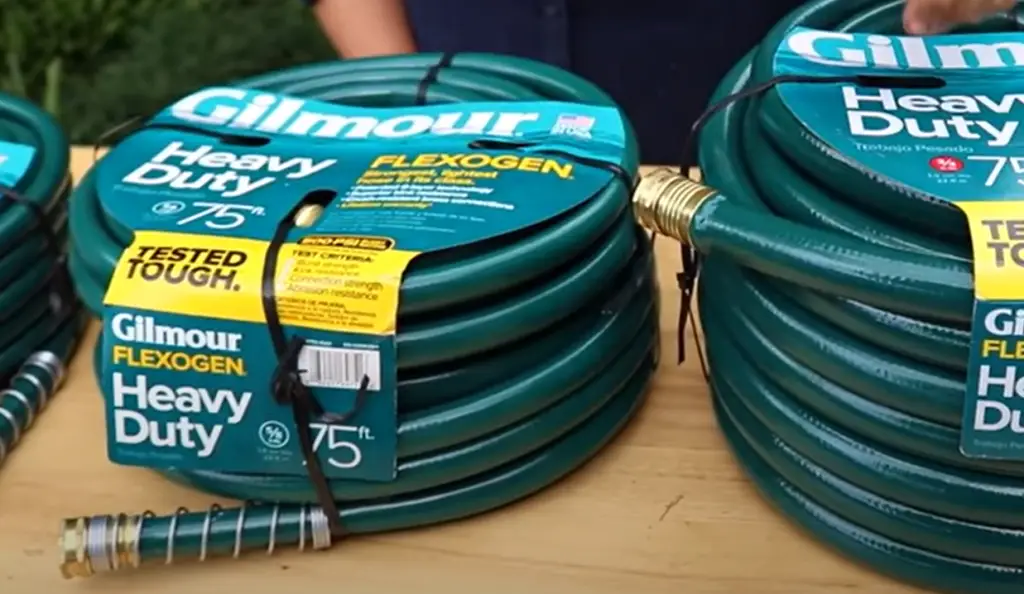
So, if you need a lot of water flow, then you’ll want to use a shorter hose. If you don’t need as much water flow, then you can use a longer hose. Just keep in mind that the longer the hose, the lower the GPM. You can use this information to determine how long of a garden hose you need in order to get the desired flow rate. [2]
Relationship Between Hose Diameter and Flow Rate
One of the factors that will affect the flow rate of your garden hose is its diameter. The diameter of a garden hose is the width of its inside opening. This measurement is important when you are trying to figure out how much water your hose can hold and what kind of flow rate you can expect from it. The most common garden hose diameters are 1/2 inch, 3/4 inch, and 5/8 inch.
The wider the diameter, the higher the flow rate. However, there are other factors that can affect the flow rate as well, such as the length of the hose and any restrictions in the hose itself.
But this number will be different depending on factors like the length of your hose and whether or not you have a nozzle attached.
Of course, these are just estimates. The actual flow rate of your garden hose could be higher or lower depending on the factors mentioned above. [3]
Relationship Between Garden Hose Water Pressure and Flow Rate
The average water pressure in a home is around 40 to 50 PSI. But what does that mean for your garden hose? Well, pressure is actually one of the main factors that influence the flow rate of a garden hose. The higher the pressure, the more water will flow through the hose per minute.
To calculate the exact amount of water that will flow through your garden hose, you need to know two things: the PSI of your water pressure and the diameter of your garden hose.
Again, the bigger the diameter and higher the PSI, the higher the flow rate will be. But ultimately, it all comes down to math. [1],[2]
Influence of a Shared Water Supply on GPM
If you have ever wondered how many GPM a garden hose is, you are not alone. This is a common question with no easy answer. The reason there is no easy answer is because the GPM of a garden hose can vary greatly depending on factors such as the size of the hose, the water pressure, and even the type of water flowing through it.
One factor that can influence the GPM of a garden hose is whether or not it shares a water supply with other hoses or appliances. If your garden hose shares a water supply with other hoses or appliances, then the GPM will be lower than if it was the only thing using that water supply. This is because each appliance or hose uses up some of the water pressure, which reduces the GPM.
How to Determine Garden Hose Flow Rate
Now you should have an idea of how the different factors can affect garden hose flow rate. But how can you determine the specific flow rate of your garden hose? There are a few different ways that you can do this.
Bucket method
If you want to get an accurate idea of how much water your garden hose can move, it’s best to test it out yourself. One way is to use a bucket and timed filling method. This is probably the most accurate way to measure flow rate. simply attach your garden hose to a faucet and turn on the water.
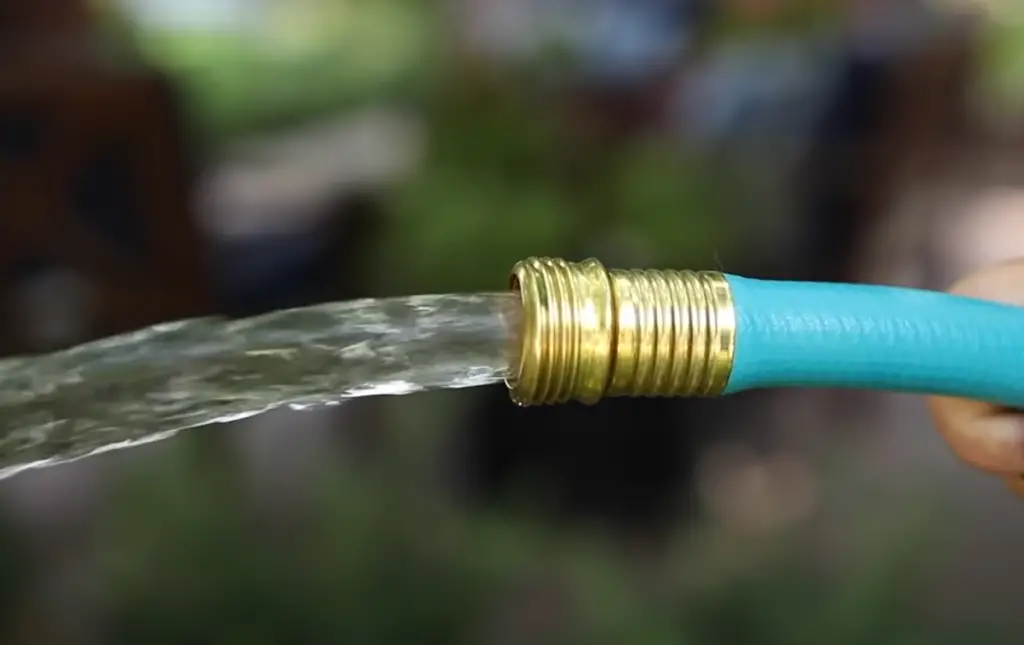
Place at least a five gallon bucket under the end of the hose and start timing how long it takes to fill up the bucket. For example, if it takes you five minutes to fill up the bucket, then your garden hose is flowing at a rate of one gallon per minute (GPM).
You can also use this method to test the flow rate of different nozzle attachments. Simply attach the nozzle and turn on the water. Place the bucket under the end of the nozzle and time how long it takes to fill up.
Look up specialized charts online
If you want a quick and easy way to find out the flow rate of your garden hose, you can look up specialized charts that list the GPM for different types and sizes of hoses.
To use one of these charts, simply find the size and type of hose that you have and look up the corresponding flow rate. Keep in mind that these charts are based on theoretical maximums and your actual results may vary depending on factors like water pressure and nozzle attachments.
To get the correct size of your garden hose, you will need to find out the diameter of your hose, its length, and its wall thickness. Once you have this information, you can find the right size on the chart. You can also use these charts to compare different types and sizes of hoses to see which one will best suit your needs. [1],[2]
Relationship Between Garden Hose Flow Rate and Efficiency
Garden hoses have different flow rates, and this impacts the amount of time it takes to water your garden. A hose with a higher flow rate will water your garden more quickly than a hose with a lower flow rate. The trade-off is that a higher flow rate also means that more water will be wasted if you are not careful.
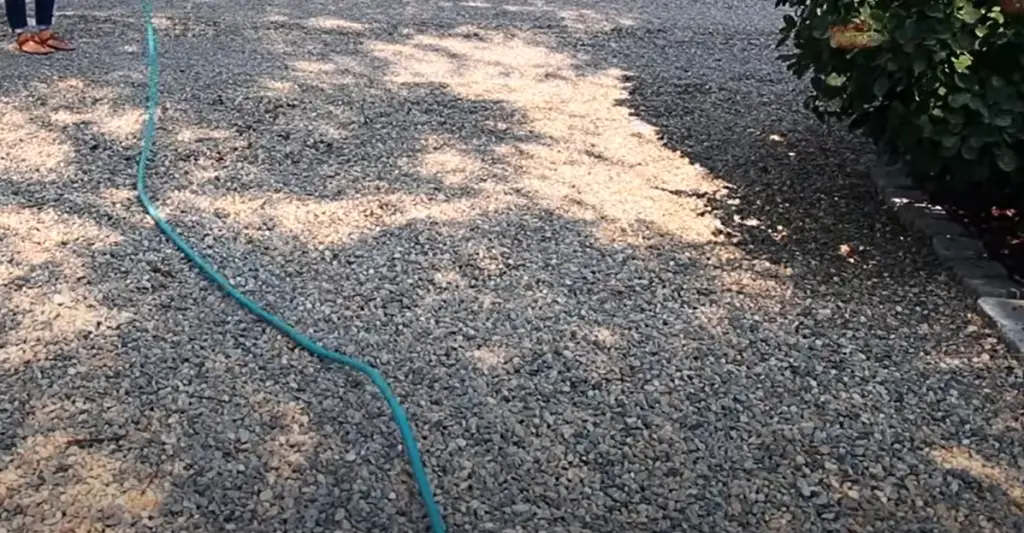
It is important to choose a garden hose with the right flow rate for your needs. If you have a small garden, you can get away with using a lower flow rate.
In general, it is best to choose a garden hose with a flow rate that is somewhere in the middle. This way, you will be able to water your garden quickly without wasting too much water.
FAQ
What is GPM?
One of the main questions people have when they are wondering how many GPM their garden hose is, is what GPM actually stands for. GPM stands for gallons per minute and is the unit of measurement that will tell you how much water your garden hose can hold and release in a certain amount of time. This is important to know because it will help you figure out if your garden hose is able to provide enough water flow for your needs.
How many GPM is a 1/2 garden hose?
A half-inch garden hose has a flow rate of 6 gallons per minute (GPM). This is based on the assumption that there is no pressure loss through the hose. A shorter hose will have a higher flow rate than a longer hose due to the increased pressure.
Will 2 hoses fill a pool faster than 1?
This depends on the size of your pool. If you have a small pool, two hoses may not make that much of a difference. But if you have a larger pool, two hoses will definitely fill it faster than one. Another factor to consider is the flow rate of your hose. If you have two hoses with different flow rates, the one with the higher flow rate will obviously fill the pool faster.
How many GPM is a 3/4 hose?
A standard garden hose has a flow rate of about 15 to 20 gallons per minute (GPM). A ¾-inch garden hose has a flow rate of 23 GPM.
What is the difference between a water hose and a garden hose?
A water hose is used to carry water from one place to another, while a garden hose is used specifically for watering plants. Garden hoses have different features than regular water hoses, such as being kink resistant and having certain nozzle attachments that make watering plants easier.
How many GPM is a spigot?
A spigot typically has a GPM of around two and a half. This is significantly more than the average garden hose, which only has a GPM of about nine. If you have a higher-end model or one that is made for commercial use, then your garden hose could have a GPM of up to fifteen. However, these models are not common and are not typically used in residential settings.
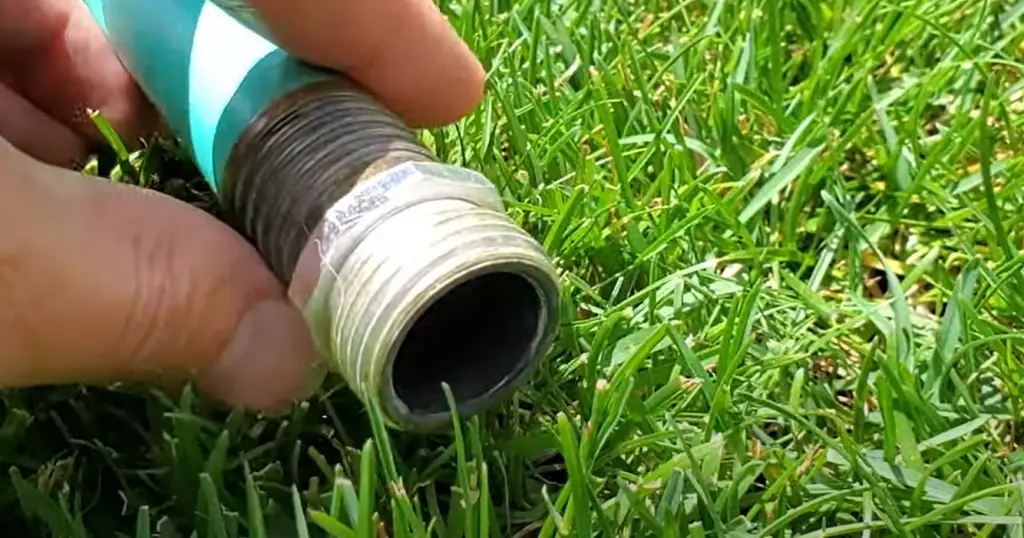
It is important to note that the GPM of your garden hose will vary depending on the size of the hose and the water pressure. If you have a smaller diameter hose, then the GPM will be lower. Conversely, if you have a larger diameter hose, then the GPM will be higher.
How many gallons per hour flow out of a garden hose?
The size and type of garden hose you have will determine the amount of water that comes out per hour. Most garden hoses have a 5/8-inch diameter, which generally provides 18 gallons of water per minute (GPM). Higher quality hoses such as those made from rubber can deliver up to 25 GPM. If you have a 3/4 inch hose, then it can deliver up to 30 GPM. However, if you have a 1/2-inch diameter garden hose then it will only deliver 9-12 GPM depending on the material that it is made from. It’s important to remember that these flow rates may vary due to differences in elevation, pipe size, and water pressure.
Does water pressure diminish the longer the garden hose is used?
The answer to this question is both yes and no. More often than not, the higher water pressure is at the beginning of the garden hose and gradually decreases as the length of hose increases. This is because as the water travels through a long hose, it encounters friction due to its contact with the inner walls of the hose. As a result, some of that pressure is lost along the way before reaching its destination.
However, there are some factors that can affect how much pressure is lost in a garden hose. These include:
- The type of material from which your garden hose is made: If your garden hose is made from PVC or rubber, it could lose more water pressure than if it were made from other materials such as polyethylene or nylon.
- The diameter of the hose: The larger the diameter of your garden hose, the less pressure you will lose over its length.
- Water temperature: A cold water supply will cause more water to be lost due to friction than a warm one.
The average garden hose has a flow rate of 2-8 gallons per minute. This means that a garden hose with a rate of 8 GPM has enough pressure to carry eight gallons of water through it every minute. Keep in mind, however, that this is only an estimate since actual flow rates can vary depending on factors such as those mentioned above.
What size garden hose yields the best pressure?
You’ll need to know the GPM (gallons per minute) a garden hose can provide to answer this question. Garden hoses come in different sizes, ranging from 1/2 inch up to 5/8 inch in diameter. A hose’s diameter influences the amount of water it can pump per minute—the larger the circumference, the greater the volume.
A standard garden hose that is 5/8 inch in diameter will deliver about 18 gallons per minute (GPM). If the 1/2-inch diameter hose isn’t giving you enough pressure, look for a 3/4-inch diameter hose. It can deliver up to 23 GPM (gallons per minute). Additionally, there are specialty hoses available such as fire hoses which can deliver much higher pressures and flow rates than regular garden hoses.
How can I change my garden hose so that the water pressure is high?
Before increasing the pressure in your garden hose, you must understand the flow rate of water through it. The rate at which water flows through a garden hose depends on its diameter and length, and the available water pressure. To convert your garden hose to higher pressure, it is necessary to calculate the gallons per minute (GPM) that will be necessary for the job.
To determine your GPM requirement, measure the inside diameter of your garden hose pipe in inches and multiply this by 0.62. This figure will give you an approximate value for how many gallons of water are dispensed each minute through your garden hose at standard operating conditions (60 PSI). To calculate the GPM at a higher pressure, multiply this figure by the ratio of the new desired pressure to 60 PSI. For example, if you would like to increase your garden hose pressure from 60 PSI to 90 PSI then your GPM requirement would be: 0.62 x (90/60) = 0.93.
Does putting your finger on a hose increase pressure?
When you put your finger over the end of a garden hose, you create an obstruction for the water which increases pressure. When a fire hose is “choked,” this turns out to be favorable as it results in an increase of the gallons per minute that can be spurted from the hose. Standard 5/8 inch garden hoses can release approximately 10 gallons per minute without any restrictions. When you choke it by putting your finger over it, this number can be increased to 12 or 13 GPM (Gallons Per Minute).
It’s important to remember that choking a hose too much or increasing the pressure beyond what it was designed for can lead to damage of the hose itself and even result in injury if water sprays out at high pressure. It’s best to stick to the manufacturer’s specified maximum GPM and not increase it too much by choking it.
So while you can increase a garden hose’s GPM by “choking” it, it is not recommended. Stick with the manufacturer’s stated maximum GPM for your particular garden hose for safety reasons and to preserve its longevity.
Can you turn a regular garden hose into a pressure washer?
The short answer is yes, but it depends on the type of garden hose you have. While a regular garden hose is not intended to be used as a pressure washer, some hoses are designed and marketed as “pressure washer-ready” hoses. These hoses are typically reinforced with heavy-duty rubber or plastic layers that help them withstand higher levels of water pressure than traditional garden hoses.
When it comes to the actual flow rate from these specialized hoses, you generally won’t find anything more powerful than 5 gallons per minute (GPM). This is still a substantial amount of power compared to the 0.5 GPM produced by a typical garden hose and nozzle combination. So if you’re looking to clean hard surfaces like tiles or patios, then a pressure washer-ready hose may be the way to go.
However, it is important to note that even if you have one of these specialized hoses, it’s not advisable to use them on more delicate surfaces such as car paint. The higher water pressure could easily cause damage. For these surfaces, you should stick with the lower GPM produced by a regular garden hose and nozzle combination instead.
Why is hose pressure so low?
The low pressure of garden hoses is intentional, as higher pressures can damage plants and soil. The average home water pressure ranges from 30 to 50 psi (pounds per square inch). Garden hoses typically operate at a much lower pressure, with most operating between 2 and 8 GPM (gallons per minute). This provides enough pressure to spray a light mist onto gardens and lawns but not enough to cause any significant damage or erosion.
Garden hose diameters also play an important role in determining the flow rate. A smaller diameter will lead to less water output while larger diameters will allow for higher flow rates. Generally speaking, the standard 5/8-inch diameter garden hose will provide around 18-25 GPM. This is more than enough for most home watering applications. Larger 3/4-inch hoses can provide up to 35 GPM but they are generally not needed for typical home gardening use.
How can I increase water pressure without a pump?
To increase the water pressure in a garden hose, you can install an in-line booster pump or an inline booster valve. An in-line booster pump is mounted between the water source and the outlet and works by increasing the pressure of the incoming water. On the other hand, an inline booster valve is installed at the end of a hose, after the nozzle. It works by reducing flow restriction to allow for more water to pass through with greater force.
Another way to increase water pressure without a pump is to use a larger diameter garden hose. A larger diameter hose has less internal resistance meaning it will require less pressure from your faucet or other source of pressurized water to fill up quickly. However, it’s important to note that the water flow rate is still limited by the garden hose’s GPM (Gallons Per Minute) rating. The higher the GPM, the more pressure and water flow you will get from your garden hose. Therefore, if you need higher water pressure for a particular task or need to increase water volume overall, opting for a garden hose with a higher GPM rating may be necessary.
Useful Video: Garden Lawn Hose test – Gallons per minute (GPM) vs. Length
Conclusion
GPM stands for gallons per minute and is the standard measurement of water flow in a water hose. In general, most garden hoses have a maximum flow rate of around 15 gallons per minute. However, there are plenty of factors that go into how much water can flow through a hose at any given time. The size of the hose, the type of material it’s made from, the water pressure, and more all play a role in determining GPM. For example, if you’re using a smaller diameter hose, the GPM will be lower than if you’re using a larger diameter hose. And if you’re using a longer hose, the GPM will also be lower than if you’re using a shorter hose. Thanks for reading, we hope this article was helpful!
References:
- https://www.hunker.com/12313457/what-size-is-a-garden-hose-connector
- https://swanhose.com/blogs/all-about-hoses/the-flow-rate-of-a-garden-hose-explained-swanhose?_pos=1&_sid=10b5a028d&_ss=r
- https://www.gardenbloggers.com/garden-hose-flow-rate/





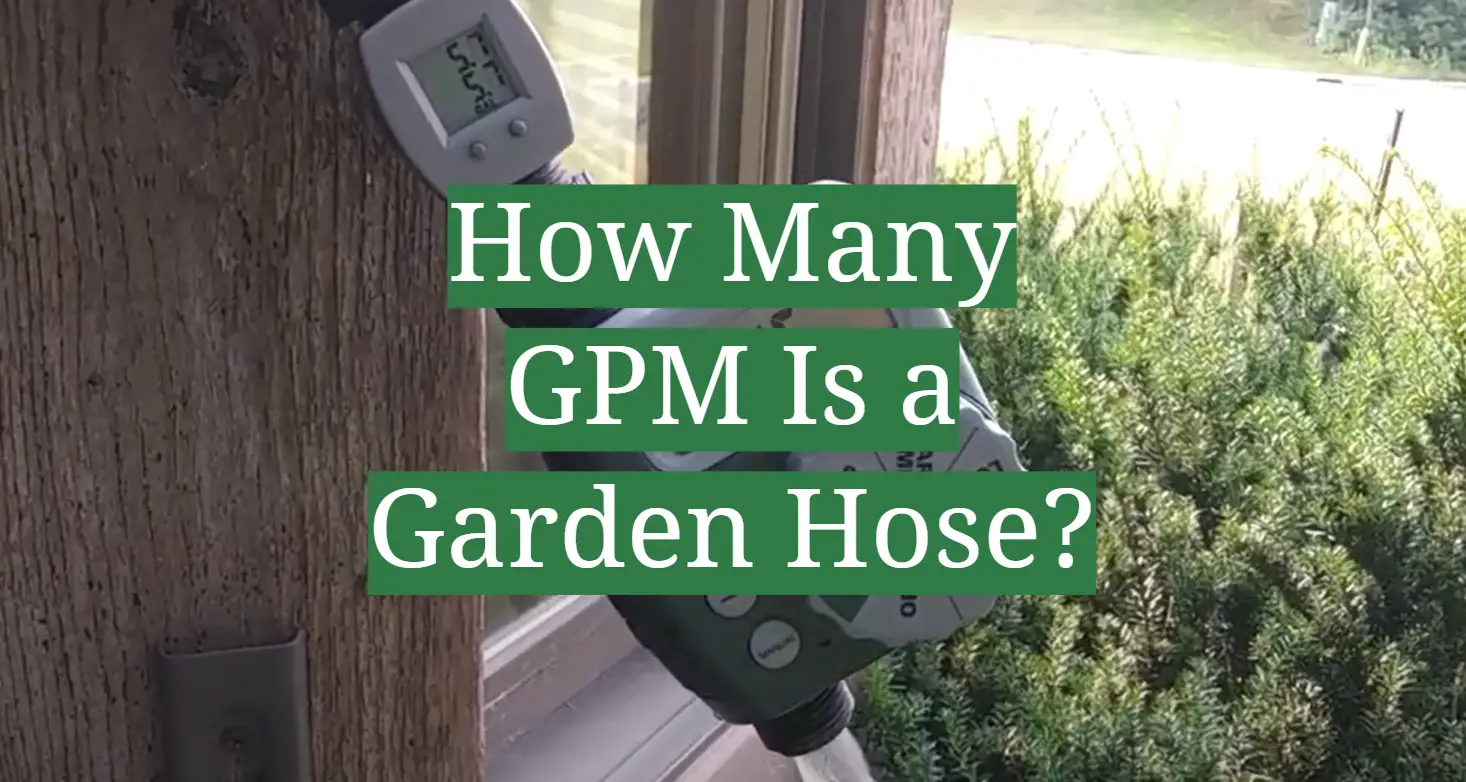
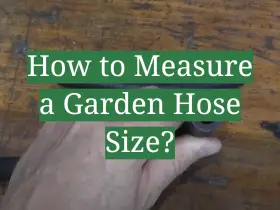
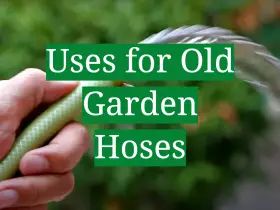
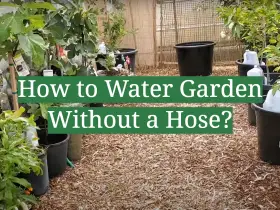
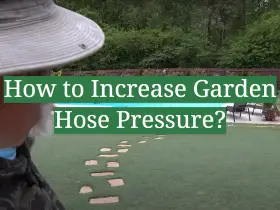
Leave a Reply
View Comments